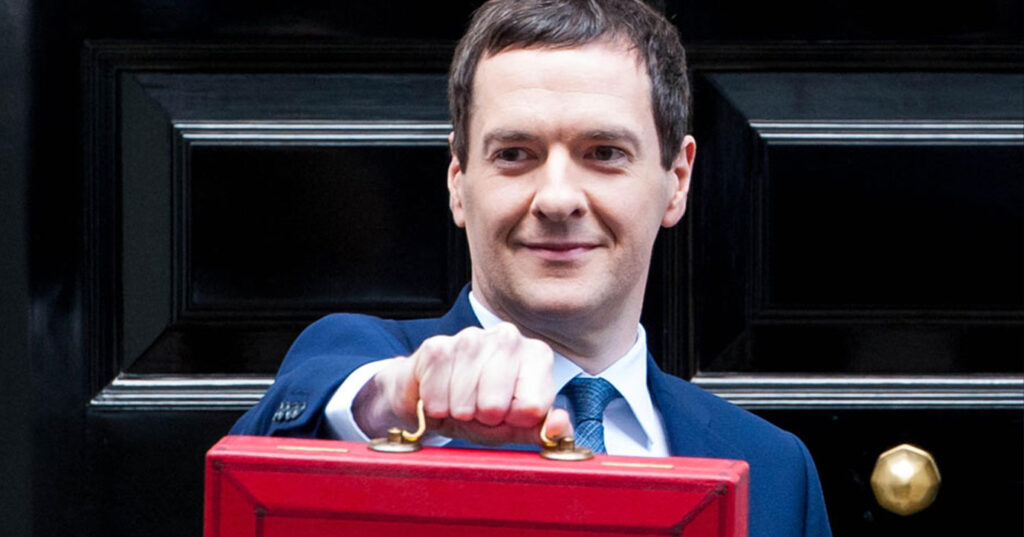
What sort of politician is George Osborne? The fact that you can read Janan Ganesh’s detailed and illuminating book about the chancellor and still be left wondering shows how difficult the question is to answer. Conflicting views are offered as to where Osborne lies on the spectrum between pragmatist and ideologue. Nevertheless, Ganesh skilfully presents the rise of a politician “fixated on the centre ground”, whether that fixation results from principle or electoral calculation.
Above all Osborne is alert to opportunity. Those inclined to sneer at his early privilege would at least have to concede that he made the most of it, just as later, as a member of the “guild” of Westminster advisers, he never missed a chance to put his undoubted talents at the disposal of those best placed to advance his prospects.
Osborne’s ability to see which way the wind is blowing – he temporarily left the Conservative Research Department to assist John Major’s “back me or sack me” leadership campaign – was put to the service of the party as well as his career. Ganesh notes that he was among the first to grasp the Tories’ predicament in the mid-1990s. His claim to be a moderniser certainly predates that of Cameron. Not having been involved in the unexpected 1992 victory, he did not have the sense, evinced by some of his colleagues, that despite all the indications everything would be all right in the end.
It is perhaps slightly harsh of the author to describe Osborne’s preoccupation with public opinion as “neurotic”, but he certainly has a more realistic grasp of it than many of his colleagues. This was especially true during the grim early days of opposition when, as I recall, shadow cabinet members would dismiss any internal poll findings that contradicted what they heard on the doorsteps in their prosperous southern constituencies.
The Austerity Chancellor offers a telling account of the successes and failures of Tory modernisation. Fascinatingly, Ganesh says that the lack of emphasis on aspiration in the early modernising project was not merely a consequence of the need to use unexpected themes to win attention, but a deliberate decision: Osborne and Cameron doubted their ability, given their backgrounds, to talk convincingly about improving the life-chances of poorer people. It was a serious omission from the Conservative programme, which is only now beginning to be rectified.
This is not an authorised biography, though Osborne granted the author three extensive interviews. Again we can infer that Osborne has used his opportunity to good effect, getting his side of the story across on a number of Tory controversies while remaining opaque on others. We have details of private emails between Osborne, Cameron and Steve Hilton, and we learn that the non-dom charge to pay for the inheritance tax pledge was dreamed up by Osborne in a hammock in Corfu, yet it is somehow “unclear” whether Osborne and Cameron asked Andy Coulson if he had known about any instances of phone hacking.
Nevertheless, the account of Osborne’s time as shadow chancellor is fair. In my view, he was right to resist promising tax cuts, and to be clear about the need for austerity. At the same time, as Ganesh says, the commitment to raise aid spending to 0.7% of GDP looks even more eccentric now than it did then, and many would agree with his assessment that the HS2 rail link is “an expensive way of shortening rail journeys by not very much”.
Ganesh distances Osborne from the “fluffier” aspects of modernisation and the Tory message, including the “big society” and the elegant but baffling “Invitation to Join the Government of Britain” that was the manifesto. It is true that both of these were down to Hilton, and equally true that neither was tested on voters. Ganesh says this omission was “careless” but it is at least as likely to have been deliberate. Hilton seemed to hate opinion research – his team sometimes appeared to think that if the voters were on a different wavelength, that was the voters’ problem.
Osborne and Coulson wanted a more concrete message. It was also their view that taking chunks out of your opponent was an essential element of politics. Their relentless attacks perhaps owed something to Osborne’s preoccupation with the then PM, which Ganesh documents well – though I disagree when he says “it helped that Osborne genuinely despised Brown”; I don’t think it helped at all. Either way, this obsession with attacking is surely one of the main reasons the Tory agenda was not articulated more clearly.
The deservedly lampooned “We Can’t Go On Like This” poster was an inglorious start to 2010, as Ganesh says, but it was more a symptom of the problem than its cause. The party found itself at the start of an election year with no clear idea what it wanted to say. The book’s pitiless description of a confused campaign with no coherent theme and no one in charge will be painfully familiar to anyone who was involved with it. Ganesh concludes that Osborne is “only partly to blame” for the lack of an overarching message and “perhaps more than most” deserves clemency. It is true as far as it goes that Osborne “performed manfully as a campaign director who was actually no such thing”, but it is hardly as though he was dragooned into the position. Ultimately, as the book records, nobody at the top of the campaign had the authority to overrule anyone else, with results that are in hindsight all too predictable. I wrote my own analysis of this chaos in my book Minority Verdict.
However, this is by no means a one-sided account, and ends with a description of the “curious mix of vulnerability and overconfidence” that produced the omnishambolic budget of 2012. Ganesh has produced an important biography of a man who is the deputy prime minister in all but name.



